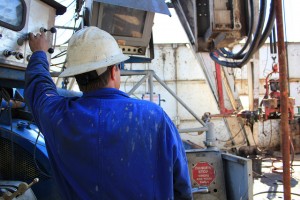
Hydraulic pressure is what does all the work on the frac site. To move the amount of rock that needs to be moved requires a high level of pressure in order to get the work done.
Using that pressure effectively is a dangerous combination of precision control and attention to detail. Pressures used can rise as high as 15,000 psi in pumping. High pressures like that leave little room for error.
Preventing Flow Line Rupture
One major concern when considering pressures that high are the lines that carry the hydraulic fluids. When one of them has a rupture, the results can be catastrophic.
Flow line rupture is not a common occurrence. When it does happen not only can equipment be damaged as a result, but lives can be lost due to the amazing dynamic forces that are released when a fluid under that high of a pressure is quickly discharged out of line.
One method used to mitigate the threat of a flow line rupture is a Flow Line Safety Restraint system. Systems like this are referred to as dynamic restraint systems because they are used to reduce the dynamic, or moving, forces that are released during a rupture. If you are planning to implement one of these systems, there are some things to consider.
What is the Dynamic Capability of the System?
The goal of a dynamic restraint is to absorb and reduce the amount of force generated by a rupture. The restraints accomplish this by using high strength straps made of material that can dissipate the energy released when a rupture occurs. The straps are attached all along the length of the flow system and are then anchored to hold them in place. The dynamic capability is just how much energy the system can dissipate.
Ways to Increase Energy Dissipation
There are two major ways to increase the amount of energy a dynamic restraint can dissipate. You can increase the amount of elongation that occurs, or increase the minimum breaking strength of the straps. Either one will allow you to dissipate more energy during a rupture.
Remember, that there is a linear relationship between these values and the remaining energy released. Doubling either one will halve the rupture energy released, reducing the danger and potential damage done.
Check Material Compatibility
When choosing a system, remember to consider what it is made out of. If the straps are made of a polymer that will degrade when it comes into contact with your fracking fluids, it is probably not the best choice for your application. Make sure to check its potential reactions with other worksite chemicals as well. Pump oils or lubricants might also compromise the system.
Also check the temperature curve associated with the system. Restraint system performance may degrade if subjected to extreme temperatures. If your worksite experiences temperatures outside the operating range, choose another material for the system.
Maintenance and Inspection
Once your system is selected and installed, set up a regular inspection and maintenance plan to ensure peak operating efficiency. Guidelines on how often the inspection should be done are typically provided by the manufacturer.
Each of the straps should have some identifying serial numbers that can be used to track the inspections. Keep careful records of when inspections are done and any findings during the inspection. Review of these items can provide information as to the health of your restraint system and when replacements may need to occur.
Other systems such as automated relief valve control systems can also mitigate flow line ruptures. Remember, before choosing or installing a system, do a thorough analysis of your work site and the options available to you. This will allow you to provide the most protection for your workers and equipment on site.